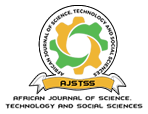Utilization of Environmental Sanitation Policy Guidelines on the Use of Sanitation Facilities in Public Primary Schools
DOI:
https://doi.org/10.58506/ajstss.v2i2.152Keywords:
Key words; child-friendly environment, policy, sanitation, school structureAbstract
There is a need for a healthy and conducive learning environment, safe drinking water, and child-friendly sanitation facilities in the school where children spend a lot of time. The objectives of the study were to establish the use of existing types of sanitation facilities and find out the status of the existing types of sanitation facilities within primary schools concerning Kenya School Health Policy and the Safety Standards Manual for schools. To achieve its objective, the study adopted a descriptive survey design. A sample of 169 schools was selected from the 773 primary schools in Meru County using simple random sampling. Data was collected using a structured direct observation schedule. Data was analyzed using SPSS software. Descriptive statistics including mean and cross-tabulations were used. The study purposively sampled 167 primary school heads with boys and girls populations of 132,180 and 131,712 respectively. Pearson’s Chi-Square test was used to determine relationships between the variables. The study revealed that 75% of the schools visited kept hygiene and had pit latrines with hand washing stations. Through observation, it was evident that 93% of the schools visited had clean environments that were free from litter. The study concluded that ratios for the sample population fell within the WHO guidelines which recommend a ratio of 25:1 for girls and 50:1 for boys’ toilets. It was concluded that in 46.1 % of the sampled primary schools, pupils living with disabilities experienced challenges in accessing sanitation facilities. The study recommended schools come up with clear budget provisions on sanitation that includes employing a staff specifically for cleaning toilets


